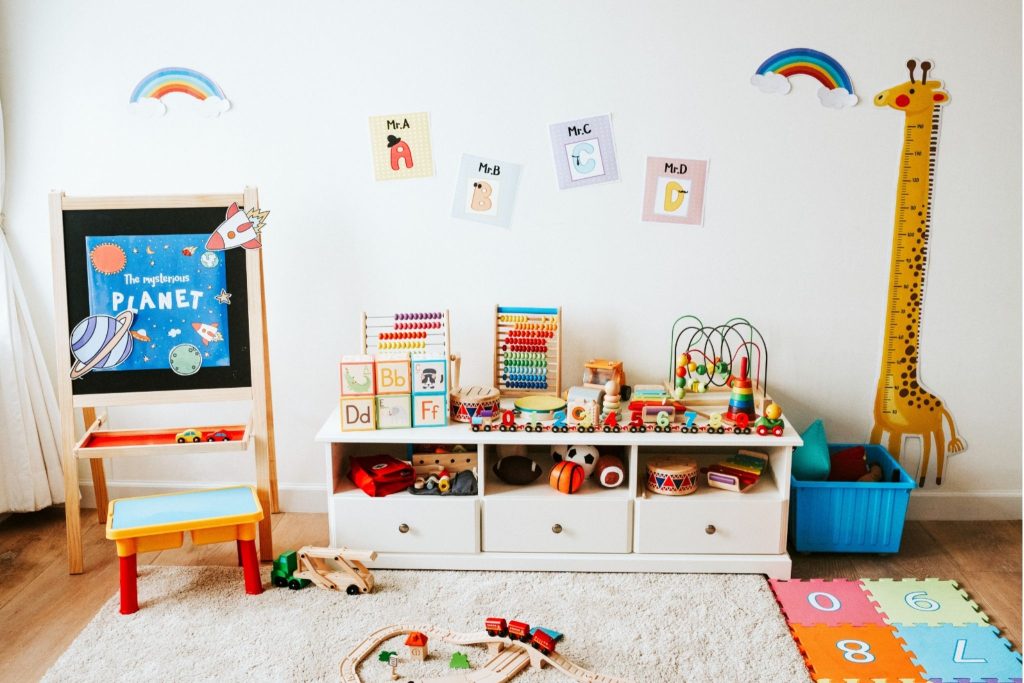
Bringing More Optimized User Experience and Efficient Services
CMA Testing today announced the launch of a revamped website. The new website uses the original URL (www.cmatesting.org) to provide customers with detailed information related to testing, inspection, and certification. Apart from a refreshed interface, the revamped website also offers an array of comprehensive service displays and optimizations. Whether you are looking for specific testing services, solutions, or learning about our latest updates, you can easily find the information you need. Currently, the new website is online. You are welcome to visit www.cmatesting.org to experience this new change.

On 13 October 2023, ASTM International has published a revised ASTM F963 Standard Consumer Safety Specification for Toy Safety ASTMF963-23 which will replace ASTM F963-17.
The revisions are mainly on the sections of Acoustic, Battery Accessibility, Expanding Materials, and Projectiles. Furthermore, the revisions also include the phthalate requirements of the Federal Regulation 16 CFR 1307 on accessible plasticized components. Other revisions include tracking labels for toys with respective Federal regulations and U.S. Consumer Product Safety Commission (CPSC) policy, as well as other editorial changes.
In accordance with section 106(g) of Consumer Product Safety Improvement Act of 2008 (CPSIA), once ASTM International notifies the Consumer Product Safety Commission (CPSC) revisions to ASTM F963, CPSC has up to 90 days to review and respond to the revisions, which is to accept or reject the revisions in part or whole. If no objections are raised, the revisions will come to effective 180 days after the notification (expected in mid-April 2024).
Below shows some noticeable amendments:
| Safety Requirements | Amendments |
| Acoustics | Clause 4.5 The use and the abuse tests for sound-producing toys intended for 8 to 14 years old was added. The requirements of use and abuse appropriate to 36 to 96 months old children are also going to be applied. The statement also specifying the toy shall be tested to all applicable requirements if the toy has features that are fit into different categories. The most appropriate requirement shall be conform if the toy is not clearly fit in any categories. New categories are as follow: 1. Close-to-ear Toys 2. Hand-Held Toys 3. Rattles 4. Stationary or Self-propelled Tabletop, Floor, or Crib Toys 5. User-propelled Tabletop, Floor, or Crib Toys 6. Push or Pull Toys Toys using Explosive Action |
| Battery Accessibility | Clause 4.25.4.1 / Clause 4.25.4.2 The battery should not be accessible without using common household tools to access the battery(ies) for the toys intended for children less than 3 years old or with batteries fit completely within the specific small parts test cylinder. Clause 4.25.4.3 A new requirement of battery accessibility was added which specified that the fastener shall remain attached to the toy or battery compartment cover if it is used to secure the battery compartment, before and after the abuse tests. Clause 4.25.4.4 When use of specialty fastener (e.g. Torx, Hex) to secure the battery compartment and come with the tool should be comply with labelling in Clause 6.9 Clause 6.9 The instruction materials for toys that require specialized tools from the manufacturer or custom tool to access the batteries should advise caregivers to keep the tool for future use, store it out of reach of children, and make it clear that the tool is not a toy. |
| Expanding Materials | Clause 4.40.1.1 The toy contains small parts that are enclosed in an outer covering that is designed to be dissolved, opened, or broken by the child, revealing the inner expanding component are consider applicable. Clause 4.40.1.2 If the components is distribute in an expanded state, but they are capable to shrink in size during storage, identity as re-expandable small parts are consider applicable. |
| Tracking Label | Clause 5.1.2 New added requirement to align with CPSC requirement. Added requirement to in compliance with Section 14(a)(5) of the Consumer Product Safety Act (COSA, 15 U.S.C. §2063(a)(5)) |
| Projectiles | Clause 8.14.5 A detailed method for testing the kinetic energy of bows and arrows has been added, the test condition of the toys with the arrow with bent or stretch capable design has been added |
| Heavy Elements | Clause 4.3.5 Materials that are the subject of exemptions listed in the most current version of 16 CFR 1500.88 are excluded from the lead-related requirements. Materials that are the subject of determinations listed in the most current revision(s) of 16 CFR 1251 (for wood), 16 CFR 1252 (for engineered wood), 16 CFR 1253 (for unfinished manufactured fibres), or 16 CFR 1500.91 (for certain materials), as exempt from testing and certification requirements, are excluded from the requirements |
| Phthalates | Clause 4.3.8 Revised to align with CPSC requirements. Replaced the obsolete ASTM D3421 test method with the current CPSC-CH-C1001-09.4 test method. |
Until the ASTM F963-23 is approved by the CPSC becomes the mandatory Direct Final Rule, the testing and certification of the toys manufactured shall be based on the current mandatory toy safety standard ASTM F963-17.

The US Environmental Protection Agency (EPA) finalized its reporting and recordkeeping rule for per- and polyfluoroalkyl substances (PFAS) under the Toxic Substances Control Act (TSCA). Any person that manufactures (including imports) or has manufactured (including imported) PFAS or PFAS-containing articles in any year since 1 January 2011, must submit information via online about PFAS uses, production volumes, disposal, exposures, and hazards. Any entities that have manufactured (including imported) PFAS in any year since 2011 will have 18 months following the effective date to report PFAS data to the EPA. Small manufacturers whose reporting obligations under the rule are exclusively from article imports will have 24 months from the effective date to report PFAS. The rule has come to effective on 13 November, 2023.
There are at least 1,462 PFAS chemicals have been identified under the reporting requirements of the reporting rules. Any chemical substances or mixture that contain a PFAS, which is listed on the TSCA Chemical Substance Inventory, or on the TSCA Section 5 Low Volume Exemption List, or if it meets the “structural definition” provided in the rule, is required to report.
Perfluoroalkyl and Polyfluoroalkyl Substances (PFAS), in general, are referred to as ‘forever chemicals’. They can considered persistent, bio-accumulative and toxic (PBT), potentially causing adverse effects on wildlife and human populations. Public has already raised concern of PFAS exposure to various health issues, including risk of certain cancers, immune system disorder, and developmental problems in children.
To deal with the complexities of regulatory compliance and eliminate the chance of failing to comply with regulations, our experts can assist your business in navigating these new requirements seamlessly, ensuring that you comply with all EPA standards, meet deadlines, and stay abreast of new regulatory updates.

On 13 October 2023, ASTM International has published a revised ASTM F963 Standard Consumer Safety Specification for Toy Safety ASTMF963-23 which will replace ASTM F963-17.
The revisions are mainly on the sections of Acoustic, Battery Accessibility, Expanding Materials, and Projectiles. Furthermore, the revisions also include the phthalate requirements of the Federal Regulation 16 CFR 1307 on accessible plasticized components. Other revisions include tracking labels for toys with respective Federal regulations and U.S. Consumer Product Safety Commission (CPSC) policy, as well as other editorial changes.
In accordance with section 106(g) of Consumer Product Safety Improvement Act of 2008 (CPSIA), once ASTM International notifies the Consumer Product Safety Commission (CPSC) revisions to ASTM F963, CPSC has up to 90 days to review and respond to the revisions, which is to accept or reject the revisions in part or whole. If no objections are raised, the revisions will come to effective 180 days after the notification (expected in mid-April 2024).
Below shows some noticeable amendments:
| Safety Requirements | Amendments |
| Acoustics | Clause 4.5 The use and the abuse tests for sound-producing toys intended for 8 to 14 years old was added. The requirements of use and abuse appropriate to 36 to 96 months old children are also going to be applied. The statement also specifying the toy shall be tested to all applicable requirements if the toy has features that are fit into different categories. The most appropriate requirement shall be conform if the toy is not clearly fit in any categories. New categories are as follow:Close-to-ear ToysHand-Held ToysRattlesStationary or Self-propelled Tabletop, Floor, or Crib ToysUser-propelled Tabletop, Floor, or Crib ToysPush or Pull ToysToys using Explosive Action |
| Battery Accessibility | Clause 4.25.4.1 / Clause 4.25.4.2 The battery should not be accessible without using common household tools to access the battery(ies) for the toys intended for children less than 3 years old or with batteries fit completely within the specific small parts test cylinder. Clause 4.25.4.3 A new requirement of battery accessibility was added which specified that the fastener shall remain attached to the toy or battery compartment cover if it is used to secure the battery compartment, before and after the abuse tests. Clause 4.25.4.4 When use of specialty fastener (e.g. Torx, Hex) to secure the battery compartment and come with the tool should be comply with labelling in Clause 6.9 Clause 6.9 The instruction materials for toys that require specialized tools from the manufacturer or custom tool to access the batteries should advise caregivers to keep the tool for future use, store it out of reach of children, and make it clear that the tool is not a toy. |
| Expanding Materials | Clause 4.40.1.1 The toy contains small parts that are enclosed in an outer covering that is designed to be dissolved, opened, or broken by the child, revealing the inner expanding component are consider applicable. Clause 4.40.1.2 If the components is distribute in an expanded state, but they are capable to shrink in size during storage, identity as re-expandable small parts are consider applicable. |
| Tracking Label | Clause 5.1.2 New added requirement to align with CPSC requirement. Added requirement to in compliance with Section 14(a)(5) of the Consumer Product Safety Act (COSA, 15 U.S.C. §2063(a)(5)) |
| Projectiles | Clause 8.14.5 A detailed method for testing the kinetic energy of bows and arrows has been added, the test condition of the toys with the arrow with bent or stretch capable design has been added. |
| Heavy Elements | Clause 4.3.5 Materials that are the subject of exemptions listed in the most current version of 16 CFR 1500.88 are excluded from the lead-related requirements. Materials that are the subject of determinations listed in the most current revision(s) of 16 CFR 1251 (for wood), 16 CFR 1252 (for engineered wood), 16 CFR 1253 (for unfinished manufactured fibres), or 16 CFR 1500.91 (for certain materials), as exempt from testing and certification requirements, are excluded from the requirements. |
| Phthalates | Clause 4.3.8 Revised to align with CPSC requirements. Replaced the obsolete ASTM D3421 test method with the current CPSC-CH-C1001-09.4 test method. |
Until the ASTM F963-23 is approved by the CPSC becomes the mandatory Direct Final Rule, the testing and certification of the toys manufactured shall be based on the current mandatory toy safety standard ASTM F963-17.

According to Section 119 of the Chinese Medicine Ordinance, no person shall sell, import or possess any proprietary Chinese medicine unless the proprietary Chinese medicine is registered under the Chinese Medicine Council of Hong Kong. Proprietary Chinese medicine means any proprietary product:
(a) composed solely of the following as active ingredients:
(i) any Chinese herbal medicines,
(ii) any materials of herbal, animal or mineral origin customarily used by the Chinese; or
(iii) any medicines and materials referred to in subparagraphs (i) and (ii) respectively;
(b) formulated in a finished dose form; and
(c) known or claimed to be used for the diagnosis, treatment, prevention or alleviation of any disease or any symptom of a disease in human beings, or for the regulation of the functional states of the human body.
The product which contain Chinese Medicine which meet all the following can be defined as food, e.g. Haw flakes. Governed by the Public Health and Municipal Services Ordinance (Cap. 132):
- the product used in form or manner of normal foods (e.g. should be taken orally and cannot specify the recommended dosage) ;
- The product does not contain any claim on curative or health care function; and
- All the Chinese herbs used in the product are generally being considered as food.
CMA Testing provides all rounded Proprietary Chinese medicine Testing and consultation service, we can help our customer to tackle their barriers in registration of Proprietary Chinese medicine. We are also a member of Proprietary Chinese Medicine Registration Supporting Scheme (A3) – Service Provider.
Welcome to contact us to know more about Proprietary Chinese medicine registration and consultation service.
| Mr Lai Tai Cheong | Mr Yip Yu Keung |
| (852) 2256 8811 tclai@cmatesting.org | (852) 2256 8810 masonyip@cmatesting.org |

For proprietary Chinese medicines registered in accordance with the Chinese Medicine Ordinance, the Certificate of Registration of a proprietary Chinese medicine (pCm) shall have effect for a period of 5 years. The Certificate holder will receive a “Notice of Renewal of Registration of pCm”, an “Application Form for Renewal of Registration of pCm” and a “Checklist for Submission of Supplementary Documents for Registration Renewal of pCm” from the Chinese Medicines Committee a year prior to the expiry of the Certificate. Applicants have to complete and submit documents related to the renewal within 6 months from the date of the Notice. Since it takes time to prepare some documents such as the stability test reports, Certificate holders must start preparing before receiving the Notice.
CMA Testing, a well-known third party assurance body, specializes in testing, inspection and certification services, our comprehensive pCm testing and consulting services can aid customers in solving a variety of issues in pCm registration. At the same time, CMA Testing also serves as a licensed pCm registration consultant and laboratory service provider for the Proprietary Chinese Medicine Registration Supporting Scheme (A3).
Contact our representatives to learn more about our pCm testing and registration consulting services.
| Mr. TC Lai | Mr. Mason Yip |
| (852) 2256 8811 tclai@cmatesting.org | (852) 2256 8810 masonyip@cmatesting.org |

Registration for this labeling scheme officially opened on 3 September 2023. Covering water dispensers and water filters that are frequently installed at the end of interior water pipe systems to supply drinking water. Successfully registered water dispensers and water filters will have a label indicating that the product complies with relevant drinking water safety requirements, making it easier for consumers to identify and purchase. The tests provided by the CMA Testing Center will be based on the requirements of the AS/NZS 4020:2018 standard for water sample extraction methods and test according to the test items specified in the Standard.
Contact us now for more details of the Scheme via any of the means below.
lilychiu@cmatesting.org/ wendylau@cmatesting.org or Whatsapp: 9855 3107/ 6321 7994.
On October 13, 2023, ASTM International published Standard Consumer Safety Specification for Toy Safety ASTM F963-23.
Currently, ASTM 963-17 is still a mandatory standard mandatory requirement under federal regulations 16 CFR 1250.
In accordance with section 106(g) of Consumer Product Safety Improvement Act of 2008 (CPSIA), once ASTM International notifies the Consumer Product Safety Commission (CPSC) revisions to ASTM F963, CPSC has up to 90 days to review and respond to the revisions, and accept or reject revisions in part or whole. If the CPSC does not respond to ASTM International within 90 days regarding the revisions to ASTM F963, 90 days later (180 days total after notification by ASTM International), the revisions become effective as a consumer product safety rule.
Following is the main technical revisions affect the requirements:
- Acoustics
- Battery accessibility
- Expanding materials
- Projectiles
In addition, updates have been made to align requirements within the standard to federal and CPSC requirements relating to the following:
- Phthalates
- Exemptions for toy substrate materials
- Tracking labels
Until the ASTM F963-23 is approved by the CPSC becomes the mandatory Direct Final Rule, the testing and certification of the toys manufactured shall be based on the current mandatory toy safety standard ASTM F963-17.

